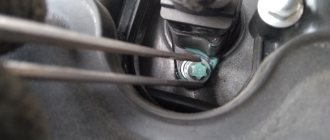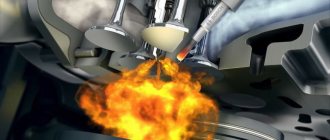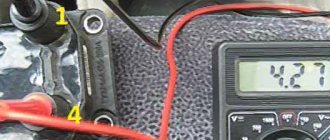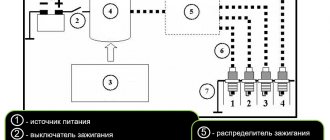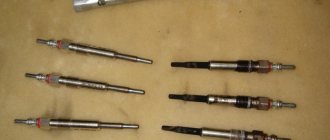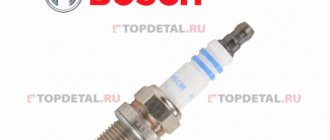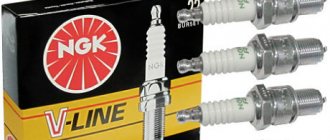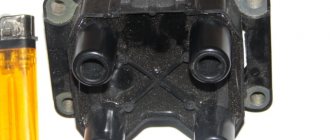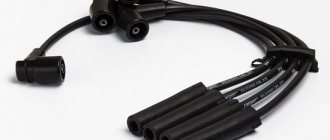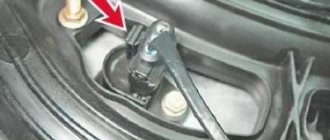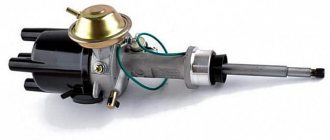Which ones and for which engine
When choosing, pay special attention to the types of spark plugs. For gasoline engines, ignition is used, and for diesel engines, incandescent.
There are three types of electrodes:
- standard,
- iridium,
- platinum.
Standard spark plugs have half the strength of iridium spark plugs. The best, but also the most expensive, candles currently available on the market are those made from platinum. According to manufacturers, their service life is determined by a mileage of 100,000 kilometers. It should also be remembered that their durability and engine performance depend on the number and shape of the electrodes. Therefore, when choosing spark plugs for a gasoline car, you should make sure what the engine requirements are (single-electrode or multi-electrode), and then check whether it meets the criteria from the catalog of this product or consult a mechanic.
Main settings
The main parameters include:
- Thermal value that determines the candle's ability to dissipate heat.
- Thread diameter, which is most often: 18, 14, 12 or 10 mm. It is worth noting that in modern engines there is a clear trend towards smaller thread diameters, which is associated with saving space in the cylinder (because compared to older designs it is necessary to leave room for additional valves and a fuel injector).
- The thread length of a standard spark plug is 19 or 26.5 mm. Modern types have much longer threads. This is due to the fact that modern heads made of aluminum alloys are less reliable than those made of cast iron. The large wall thickness of the head bore reduces the risk of thread stripping.
- The size of the key is related to a certain extent to the diameter of the thread - very often, the larger the diameter of the thread, the larger the size of the key. The most commonly used sizes are 20.7, 16 and 14. Sometimes, in addition to the typical hexagonal body, you can find other thread shapes.
- Number of side electrodes: 1, 2, 3 or 4 - it is worth noting that a larger number of electrodes does not necessarily determine the best spark plug, that is, the one that is optimally suited for a given type of engine. The electrode coating material is most often a good conductor, for example, copper, nickel, platinum, iridium.
- The distance between the electrodes - too large cannot provide a spark (so-called “misfire”), too small - can make it difficult to start a warm engine and limits the spark energy. Depending on the type and application, the interval should be from 0.3 to 1.3 mm.
- The tightening torque values, depending on the thread diameter, range from 10 to 30 Nm. In the case of screwing in spark plugs that use torque, the tightening must be weaker because the metal gasket of the housing is no longer as elastic.
Other options include, for example, the use of a shield resistor, non-standard thread lengths, and assignment to non-standard motors.
Spark plug
Which brand of spark plug should I choose?
There are several types of candles. Two or more electrodes, torch design, plasma torch ignition. All manufacturers have in their assortment spark plugs with different types of electrodes.
Here are the best of them:
1. BOSCH
2.NGK
3. CHAMPION
4. BRISK
5. DENSO
The choice of manufacturer is not as important as the choice of model and manufacturing technology.
Nevertheless, some features of the brands can be highlighted:
- Bosch has an agreement for OEM supplies for Mitsubishi, Fiat, Audi, Peugeot, Toyota.
- NGK cooperates with such automakers as Ferrari, Ford, Volkswagen, Volvo, BMW.
- Champion works for Suzuki, GM, Jaguar, Volvo, Alfa Romeo.
- Brisk produces spark plugs with the logo of Audi, Opel, Skoda and BMW.
Accordingly, by purchasing a spark plug with the logo of the manufacturer that produces products for your car brand, you will simply save money without losing quality. Often the part number of the product matches the car make and the original name of the manufacturer on consumables.
Thermal value
This is one of the few “invisible”, but very important parameters that determine what kind of spark plugs there are and to what extent they remove heat from the engine. When a candle removes heat well, therefore it heats up less, it is called “cold”. If it removes heat to a small extent (while retaining it) and heats up more, in this case it is said to be “hot”.
The heat value coefficient is indicated as a digital code. Unfortunately, each manufacturer uses different designations. For example, according to NGK, the higher the heat value coefficient, the cooler the plug.
In turn, the manufacturer Bosch has reverse numbering, in which a high numerical value corresponds to “hot”, and a low value to “cold”.
Correct heat value
A correctly selected thermal value allows the electrodes to operate at an optimal temperature, which can be determined at the level of 450 - 850 ° C. Then the phenomenon of self-cleaning of the electrodes occurs.
- When the spark plug is too “cold” , this phenomenon does not occur and the electrode becomes covered with soot, which makes it difficult or even impossible for a spark to appear.
- When the spark plug is too “hot” , the high temperature can lead to detonation combustion and melting of the electrodes.
The length of the lower part of the insulator, called the cone, has a direct impact on the efficiency of heat removal. The longer it is, the more the candle heats up.
The main task of spark plugs is to initiate ignition of the fuel-air mixture in the combustion chamber of the engine. Engine starting, smooth operation, performance, speed range and fuel consumption depend on its uninterrupted operation.
Most often there is one spark plug for each cylinder. However, other technical solutions can also be found. For example, Alfa Romeo Twin Spark engines use two units per cylinder.
Standard spark plugs must be replaced every 20,000 - 30,000 km. Platinum and iridium analogues are changed even after 100,000 - 120,000 km. When replacing, you must adhere to the manufacturer's recommendations regarding the cost and types of spark plugs used in the car.
Spark plug design
Main characteristics of spark plugs
Only at first glance it seems that the choice of candles is extremely simple. In fact, there are a huge number of their varieties, depending on a number of parameters:
- the type of ignition used in a particular vehicle (contactless/contact, electronic, battery);
- degree of boost of the power unit (compression ratio - an indicator that correlates with compression);
- type of installed engine power system (injection, carburetor, single injection, multipoint injection);
- features of the implementation of the engine and its power system (atmospheric, forced, turbocharged, sports).
But knowing these features is not enough to fully understand how to choose the right spark plugs for your car.
Therefore, we bring to your attention a short excursion into the theory. Understanding how a spark plug works and works will also be useful for general educational purposes, because you will have to deal with replacing these consumables very often.
Let us briefly describe the structure of a candle. Its main elements are the body. It is placed in a ceramic insulator and ends with two electrodes, to which a charge of thousands of volts is applied to produce a spark.
Let's look at the SZ device in more detail:
Spark plug device
Spark plug device
- output of the spark plug to the high-voltage wire;
- ceramic insulator ribs (their purpose is to cool the SZ base and dampen stray currents);
- the insulator itself;
- metal outer part for unscrewing/twisting the spark plug;
- central electrode;
- one or more side electrodes;
- a pair of o-rings to seal the bottom of the spark plug that extends into the combustion chamber.
The electrodes and the SZ body itself are usually made of alloy steel, which allows them to withstand corrosion phenomena for a relatively long time. The insulator is made of ceramic, which can withstand high temperatures. During operation, the electrodes located in the combustion chamber can heat up to such temperatures that ignition of the fuel mixture can take place without sparking (such spark plugs are called glow plugs and are used in diesel power units).
Why is it so important to be able to select spark plugs in accordance with the type of internal combustion engine and its main characteristics, including the compression ratio? Otherwise, there is a possibility that the combustion of the combustible mixture will not occur as expected (delayed or advanced). This is equally bad for the engine, since in the medium term it threatens with irreversible consequences, including the destruction of the main components of the power unit.
Let's look at the main performance characteristics of spark plugs.
How does a spark plug work?
The operating principle has not changed since its invention, but, nevertheless, manufacturers are constantly trying to outdo each other using new technologies and materials for production. Each has a similar structure. The difference between spark plugs is shown in the following figure.
Types of mass electrodes:
a – standard, with a convex insulator cone, b – standard leading, c – one side, d – two side electrodes, e – two side electrodes in a rounded shape, f – three side electrodes, g – four side electrodes, h – platinum central electrode, i – platinum tip, j – platinum ends of both electrodes, j – platinum tips of two side and central electrodes, l – platinum central electrode.
Overview of types of spark plugs
Automotive spark plugs can be divided into different types not only depending on technical characteristics. Their material of manufacture should also be taken into account. According to this they can be:
- nickel;
- platinum.
- iridium
Nickel candles are the simplest design. The central and side electrodes are made of nickel, therefore they are low cost, and therefore they should be changed quite often. As the manufacturers assure, their service life is 15-50 thousand kilometers. However, our modern realities are such that we can safely divide this value in half, and it turns out that the replacement frequency is once per year of operation.
Platinum spark plugs are distinguished by the presence of soldering of the same metal on both electrodes (central and side). This significantly increases the service life to 50-60 thousand kilometers. This material is resistant to corrosion and holds up well in high temperature conditions.
Iridium spark plugs use a mixture of two metals: iridium is applied to the central electrode, and platinum is applied to the side elements. As a result of this tandem, the service life of the spark plugs is even longer. As manufacturers note, it can be up to 60-100 thousand kilometers.
What is the difference between standard, iridium and platinum spark plugs?
Standard – equipped with a nickel alloy electrode. Ensure efficient drive operation and low fuel consumption. The alloy of nickel-ion battery spark plug is characterized by high vitality, and the copper core of the electrode, standardly used in such options, removes heat well and also prevents the spark plug from thermal overload. In addition, this is the cheapest variety possible.
Iridium is a type in which high-quality technical solutions are now used. Such spark plugs have a central electrode tip made of iridium alloy. The use of this metal is associated with its characteristics, since iridium is one of the hardest metals and is characterized by high resistance to corrosion. The use of iridium has other advantages. The noble metal allows for a thinner electrode rod – even 0.4 mm. This, in turn, affects the reduction of the ignition voltage and, in addition, improves the propagation of the ignition flame front in the combustion chamber. Due to the use of the latest technologies, this type is more expensive. However, the price is compensated by the twice longer service life.
Platinum - characterized by a very long service life. The platinum plates used in the central electrode ensure constant power even in the most difficult conditions.
This electrode is thinner than the standard one. The price of platinum candles is higher than that of standard analogues. Platinum elements are ideal for gas-powered vehicles. In this case, their service life is even four times longer than conventional ones.
TOP best spark plugs
So what are the best rated spark plugs? Today there are quite a lot of SZ manufacturers and it is sometimes difficult for the driver to make the right choice.
Below is a ranking of the most popular brands:
- The first place in the ranking is occupied by SZ Denso Iridium Power. This version of spark plugs is equipped with a thin central electrode, its diameter is 0.4 mm. The cost of such devices is quite high, but this is due to the excellent quality. There are practically no negative reviews online about this product, which is why it takes first place in the rating.
- SZ company BOSCH. Spark plugs from this manufacturer have been used by our compatriots for a long time, so it is not for nothing that the brand was included in our rating. The Bosch company offers consumers a huge range of SZ of different designs and at different prices. Of all the products, the Platinum line should be highlighted. In the candles of this line, the central electrode is installed in a ceramic base, as a result of which the thermal effect on the device will be minimal. Accordingly, this will increase the service life of the SZ by reducing wear.
- Another model in the rating is Beru Ultra-X Platin. In this case, the operating principle is similar to the SZ described above, but such devices are equipped with four electrodes. This product has also proven to be high quality. Thanks to the use of new technologies, spark plugs have a long service life, which cannot but please consumers.
How to choose suitable candles
Choosing the right type of spark plug is a very important point. Because there are no universal options. For each car model, special types are assigned. These are the ones that should be installed in a car. The most accurate sources of information about which products should be used are vehicle operating instructions, as well as manufacturer catalogs.
Individual companies have different ways of labeling their products, so it's best to check with your retailer before purchasing. At points of sale, sellers will be happy to advise which types can be used for a given car model and will help you make the right choice of type and manufacturer. The assortment includes candles in different price categories from almost all manufacturers: Beru, Bosch, Denso, NGK.
Spark plugs may differ from each other in size - thread shape, body, performance standard, heat value and type of electrodes used. You should also pay attention to what kind of fuel your engine is powered by. It can be gasoline, gas or diesel fuel. All these parameters determine the correct choice.
In the case of older gasoline-powered cars, you can afford to choose the cheapest solution - standard spark plugs. The more expensive and durable iridium and platinum options, which are used in most cars after 2000, are also suitable. If your car runs on gas, purchasing a type that is designed to handle that type of fuel is an excellent choice.
Features of choosing spark plugs
To make the right choice of spark plugs, you must strictly follow the recommendations that are set out in the vehicle’s operating instructions or in its passport. First of all, you should pay attention to the heat rating, the gap between the electrodes and the thermal parameter. This will allow you to admire the sight of faulty spark plugs as little as possible.
Preference should be given to trusted manufacturers, including:
- NGK.
- Denso.
- Bosh.
- Brisk.
These companies have already stood the test of time, and have been for a long time. Many drivers have already become convinced of the professionalism of these specialists, which is reflected in the high quality of their products.
It is also worth remembering about fakes, which flood any market, including the automotive market. Thus, with original NGK spark plugs, the central electrode is located perpendicular to the contact and is absolutely flat.
BOSCH products have a brand mark located just above the thread (belt). There is also no W8 ATS marking, which is usually placed on fakes.
The contact pin of original DENSO spark plugs does not shine, which is often found among counterfeit products. The markings themselves are clear, the surface of the frame is perfect, and the electrodes themselves are centered.
What is suitable for diesel engine
Diesel engines have differences in spark plugs - they use glow plugs. They serve only to start the drive in the initial stage of operation until the motor has preheated. The heating time for glow plugs varies and ranges from 3 to 30 seconds. Most of those used in modern diesel engines heat up to a temperature of 900 degrees Celsius after 3 to 5 seconds. It is difficult to determine the mileage after which they need to be replaced.
In older cars, damage and the need for replacement will be indicated by starting problems even at positive temperatures. In new designs, the driver’s task is made easier by the ubiquitous electronics, which notify about faulty spark plugs. Mechanics recommend replacing spark plugs at least every 100 thousand km, although, as practice shows, in many cases they work much longer.
If a glow plug is damaged for a long time, carbon deposits accumulate on it and, as a result, problems with removing the plug may occur. This may require dismantling the entire head.
Spark Plug Replacement Tools
You don't need many tools to replace spark plugs. The most important of them is a socket wrench with extension and spark plug socket. Candle sockets come in two sizes: 5/8" (16 mm) and 13/16" (21 mm). Most spark plug sockets have a rubber insert that prevents the plug from slipping. You may also need a universal joint if the spark plug is installed in a hard to reach place. The universal joint allows you to tilt the key along one axis and rotate it around another axis. If you don't have enough space to work with a wrench and extension to get to the spark plug, then a universal joint may come in handy. When replacing spark plugs, it is important not to overtighten them. Over-tightening the spark plug can damage the spark plug itself or the cylinder head threads. To avoid over-tightening, use a torque wrench. Torque wrenches indicate the amount of torque you apply when turning the wrench. Although almost all modern spark plugs are sold with a preset gap, it is better to have a gauge on hand. A gap gauge allows you to ensure that the spark plug center electrode is the correct distance from the ground electrode. It is this part of the candle that gives the spark. You may also need spark plug cap pliers, a rubber tube, a clean rag, rubbing alcohol, anti-seize agent, and a can of compressed air. The absence of these things is not critical, but they can make your work easier.
Next, we will talk in detail about how to change spark plugs.
Expert advice
- When choosing candles, do not be guided only by price, but also by type. Iridium or platinum types have several times longer service life than standard spark plugs and greater durability.
- Try not to buy candles that are not designer. This is too important a part for a car engine to skimp on it.
- Don't pick them yourself. It is best to contact a specialist in this matter who will select a special spark plug for your car.
- It's better not to change the spark plugs yourself. Although the action seems simple, it should be kept in mind that the housing is twisted with sufficient force (torque).
- Never install used spark plugs in a car or change them individually. When replacement is necessary, replace the entire set at once
The correct selection of spark plugs is very important and has a positive effect on increasing the service life of the entire ignition system. This occurs by reducing the high voltage level generated in the ignition system before the fuel mixture is consumed. Before the cold season sets in, users of cars with gasoline and gas engines should take care of the serviceability of the ignition system.
Even minimal damage may not produce any symptoms in the summer, but can cause problems in the fall and winter.
